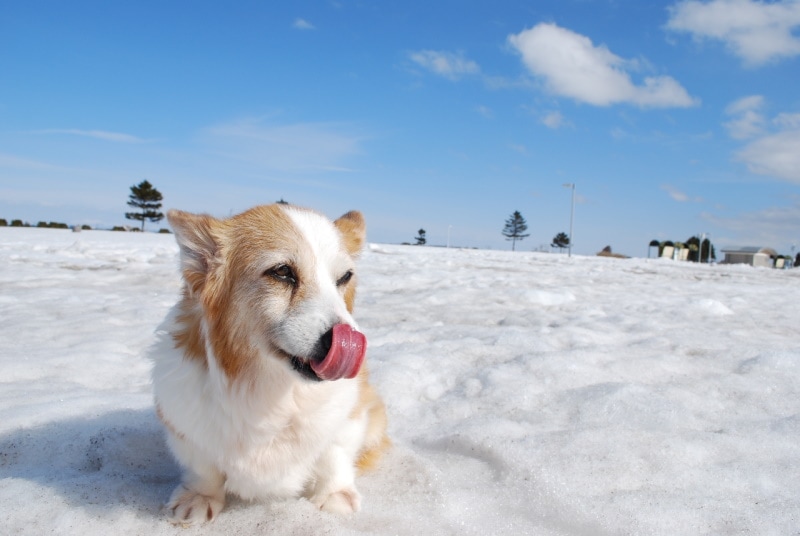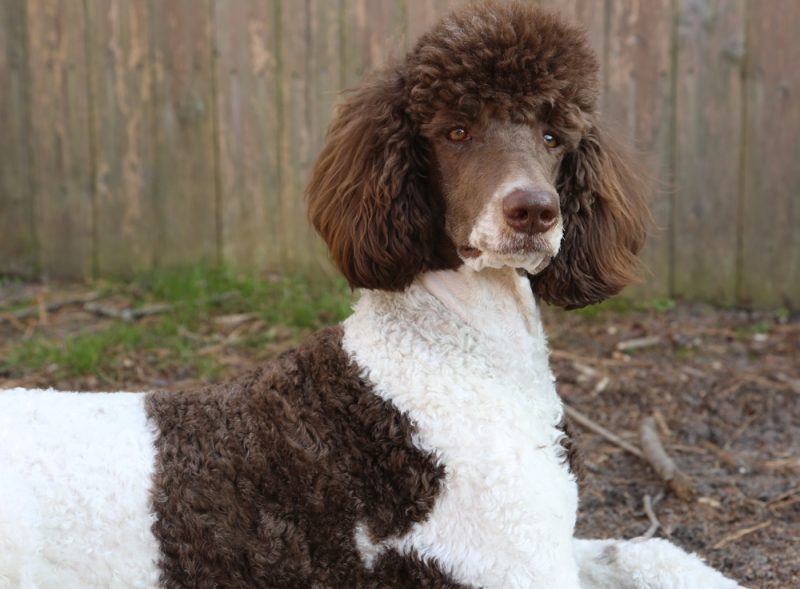In this article
View 3 More +Corgis are a stocky and sturdy breed from Wales. Their lush double coats provide resistance to cold and insulation in cold weather, so they can have fun in the cold. However, they can still get too cold, and all dogs have their limits.
While some may think Corgis won’t like the cold because they’re closer to the ground than other breeds due to their short legs, that isn’t the case. Corgis will enjoy the cold, but they can get wet more easily because of their height. Wet fur stays cold, and you must monitor your Corgi in bitter temperatures or snow.

How Cold Is Too Cold?
Corgis can manage reasonably well in colder temperatures but will need to be supervised closely in temperatures around 45 degrees Fahrenheit. Walks should be shorter and around 30 minutes, if possible. Frostbite and hypothermia can occur at lower temperatures, and a Corgi’s pads aren’t adapted to walking on icy ground. Most importantly, check for signs of injury or frostbite, which include:
- Discolored skin, such as reddened skin, white blanching, or, in severe cases, black
- Cracks or lesions in the pads
- Pain and reluctance to walk
If you notice any of the previous signs when out in the cold, get your Corgi inside and contact a vet. Frostbite can lead to dead tissue and necrosis in extreme cases.

Can the Weather Change How Much Cold a Corgi Can Manage?
A Corgi can handle cold temperatures in sunny, calm weather. However, keep your Corgi’s time outside limited if the wind chill (or, more importantly, rain) and the temperature is low.
It’ll be tough for them to get warm when their fur is wet since it can’t insulate them against the cold as well. They’re more at risk of hypothermia, and providing a jacket can prevent them from getting wet and keep them warm.
Do Corgis Like Snow?
Because Corgis have thick double coats, they can enjoy their time out in the snow. Snow is a novel experience for them most of the time, so if they’re kept warm, they’ll likely love frolicking in it.
It’s best to keep them inside if it’s freezing. While they can handle short periods in the snow, their height can quickly make them too cold. Also, while their short statures won’t usually hold them back, their undercarriage can become wet in deep snow.

How Do I Know If My Corgi Is Too Cold?
If you’re going out in the cold with your Corgi, it’s a good idea to watch for signs of hypothermia. Some signs appear before others, and others are quite subtle.
- Shivering (to generate) body heat
- Whimpering or crying, indicating discomfort or pain
- Scratching a door (if close to home) to go back inside
- Curling up—dogs curl up when cold to conserve body heat
- Limping or changes in gait (indicating that pads are sore)
- If your Corgi loses consciousness, they’re dangerously cold, and hypothermia has set in. You must get them into a warm place as soon as possible and call the vet.
Did you know you can speak to a veterinarian without having to travel? Just head over to PangoVet. It's our online service where you can talk to a vet online and get the advice you need for your pet — all at an affordable price!


Conclusion
If they’re walking in the cold, the walk should be kept to 30 minutes or less if the temperature drops below 45 degrees Fahrenheit, and you should check the weather before leaving to make sure your Corgi is well-equipped. A sunny, dry day with snow on the ground will allow your dog to have a lot of fun. However, your Corgi may become uncomfortable more quickly if it’s raining or bitterly cold. A coat can keep them warm if you want to take them out, but the best thing to do is to stay close to home and let them have fun while keeping an eye on them.
See also:
Featured Image Credit: Jumpstory



















